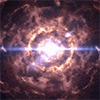Jul 05, 2024 (Nanowerk News) EPFL engineers have created a device that can efficiently convert heat into electrical voltage at temperatures lower than that of outer space. The innovation could help overcome a significant obstacle to the advancement of quantum computing technologies, which require extremely low temperatures to function optimally....
Novel approach to nanopore design enhances molecule capture without compromising sensing accuracy
Jul 05, 2024 (Nanowerk Spotlight) Nanopore technology has emerged as a powerful tool for single-molecule sensing, offering unprecedented capabilities in fields ranging from DNA nanopore sequencing to protein analysis. These nanoscale pores, whether biological or solid-state, act as molecular gateways, allowing researchers to detect and analyze individual molecules as they...
Atomic force microscopy in 3D
Jul 05, 2024 (Nanowerk News) Atomic force microscopy (AFM) was originally invented for visualizing surfaces with nanoscale resolution. Its basic working principle is to move an ultrathin tip over a sample’s surface. During this xy-scanning motion, the tip’s position in the direction perpendicular to the xy-plane follows the sample’s height...
Fresh wind blows from historical supernova
Jul 05, 2024 (Nanowerk News) A mysterious remnant from a rare type of supernova recorded in 1181 has been explained for the first time. Two white dwarf stars collided, creating a temporary “guest star,” now labeled supernova (SN) 1181, which was recorded in historical documents in Japan and elsewhere in...




